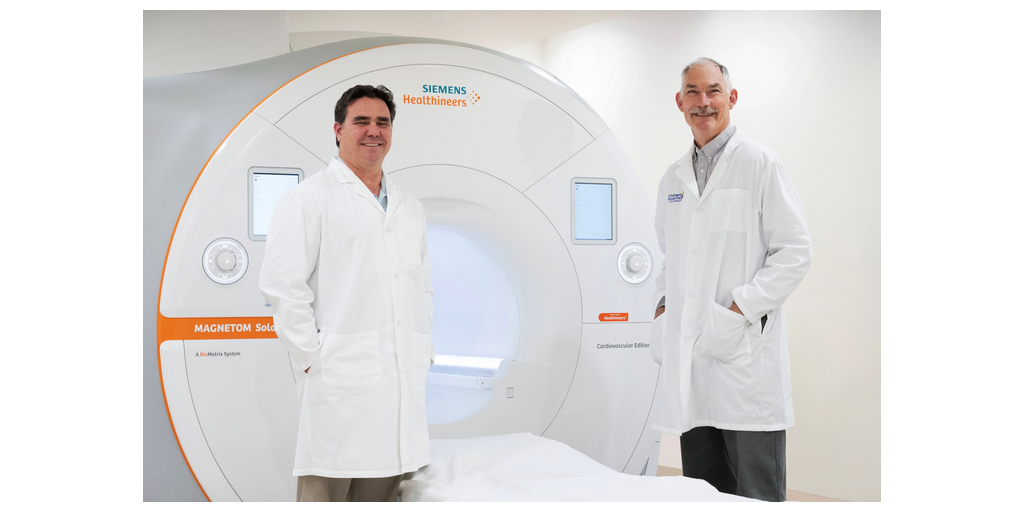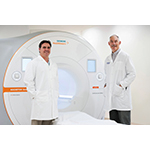Children’s Hospital Los Angeles Opens New Cardiac Imaging Suite Featuring Revolutionary Low-Field MRI, a First for a Pediatric Hospital in the United States

Low-field MRI is a gamechanger for pediatric and fetal imaging, advancing diagnostic and treatment capabilities for children with heart and lung conditions
LOS ANGELES–(BUSINESS WIRE)–Children’s Hospital Los Angeles has opened its new Cardiac Imaging Suite, a 6,650 square foot facility that will improve access, service, and quality of care for cardiac patients featuring state-of-the-art technology that cannot be found at any other pediatric center in the United States. The suite houses the new, FDA-approved Siemens FreeMax 0.55 Tesla MRI system, a first-in-the-nation machine for pediatrics, that will allow for new ways to image children’s hearts, lungs, and more.
“Children’s Hospital Los Angeles is committed to pioneering the latest research and innovations in the pursuit of advancing the standards of pediatric care. It’s a commitment we take seriously as one of the top pediatric cardiology and heart surgery programs in the country that routinely treats some of the most complex cardiac patients,” says Paul F. Kantor, MBBCh, MSc, FRCPC, Chief of the Division of Cardiology and Co-Director of the Heart Institute at Children’s Hospital Los Angeles. “We are thrilled to be the first in the U.S. offering this groundbreaking new technology to children and could not be more excited to harness this machine to further research and develop new applications in pediatric and fetal imaging.”
Low-field MRI offers excellent, diagnostic-quality images of the heart in a quieter, much more spacious environment with a magnet that is three to six times lower in strength than today’s conventional clinical systems, making it safer and more comfortable for children. While stronger magnets provide a stronger signal, any movement or air can cause distortion in the image. The low-field MRI has a weaker signal and can accommodate motion, making it ideal for imaging fetuses, the heart, lungs, and GI tract. In addition, because the patient does not need to be perfectly still, low-field MRI will reduce the need for general anesthesia in children as young as 4 or 5 years old; alternative methods of pain management with fewer side effects and preoperative restrictions can be used instead, such as virtual reality goggles. Low-field MRI is also excellent for patients who have metal implants such as pacemakers or have a larger body size, which can make it difficult to get good ultrasound or computed tomography images.
“Low-field MRI opens up a world of possibilities that can improve care for children, including the development of real-time imaging capabilities,” says John Wood, MD, PhD, Director of Cardiovascular MRI at Children’s Hospital Los Angeles. “This technology will allow Children’s Hospital Los Angeles to pioneer novel MRI applications, such as using the 0.55T magnet to guide procedures such as cardiac catheterizations. Using low-field MRI instead of X-ray would be a big deal for children, as limiting radiation exposure is key. The applications for lung imaging are also exciting, as there is no good way currently to monitor the progression of lung disease in babies and children. While it will take time to develop these techniques and translate them to the clinical environment, that is where we are headed thanks to this revolutionary machine.”
An international MRI expert, Dr. Wood and his team were the first in the world to perform real-time imaging of a human fetal heart – without the need for cardiac synchronization – using low-field MRI.
The Cardiac Imaging Suite also features the Siemens Sola 1.5 Tesla MRI machine, five patient prep and recovery bays, an anesthesia induction room, and space for a future cardiac CT scanner. The 1.5T magnet is the current gold standard for advanced cardiac MRI and delivers exceptional image clarity, ensuring high-resolution imaging and faster scan times. The suite also offers specialized stress testing for myocardial perfusion, addressing blood flow issues in the heart. Children’s Hospital Los Angeles is the only facility in California providing this advanced diagnostic service, setting a new standard for pediatric cardiac imaging.
About Children’s Hospital Los Angeles
Founded in 1901, Children’s Hospital Los Angeles is at the forefront of pediatric medicine and is the largest provider of hospital care for children in California. Children’s Hospital is home to renowned experts who work together across disciplines to deliver inclusive and compassionate care, and drive advances that set pediatric standards across the nation and around the globe. Children’s Hospital Los Angeles delivers a level of care that is among the best in the world for a truly diverse population of children. The Hospital is consistently ranked in the top 10 in the nation on U.S. News & World Report’s Honor Roll of Best Children’s Hospitals. CHLA is the top-ranked children’s hospital in California and the Pacific U.S. region for 2024-25. Children’s Hospital Los Angeles embraces the hospital’s mission to create hope and build healthier futures. Children’s Hospital Los Angeles is among the top 10 children’s hospitals for National Institutes of Health funding. The Saban Research Institute of Children’s Hospital Los Angeles supports the full continuum of research, allowing physicians and scientists to translate discoveries into treatments and bring answers to families faster. The pediatric academic medical center also is home to one of the largest training programs for pediatricians in the United States. And the hospital’s commitment to building strong communities is evident in CHLA’s efforts to fight food insecurity, enhance health education and literacy, and introduce more people to careers in health care. To learn more, follow CHLA on Facebook, Instagram, LinkedIn, YouTube and X, formerly known as Twitter, and visit CHLA.org/blog.
Contacts
Media Contact: Lauren Song
E-mail: lasong@chla.usc.edu




